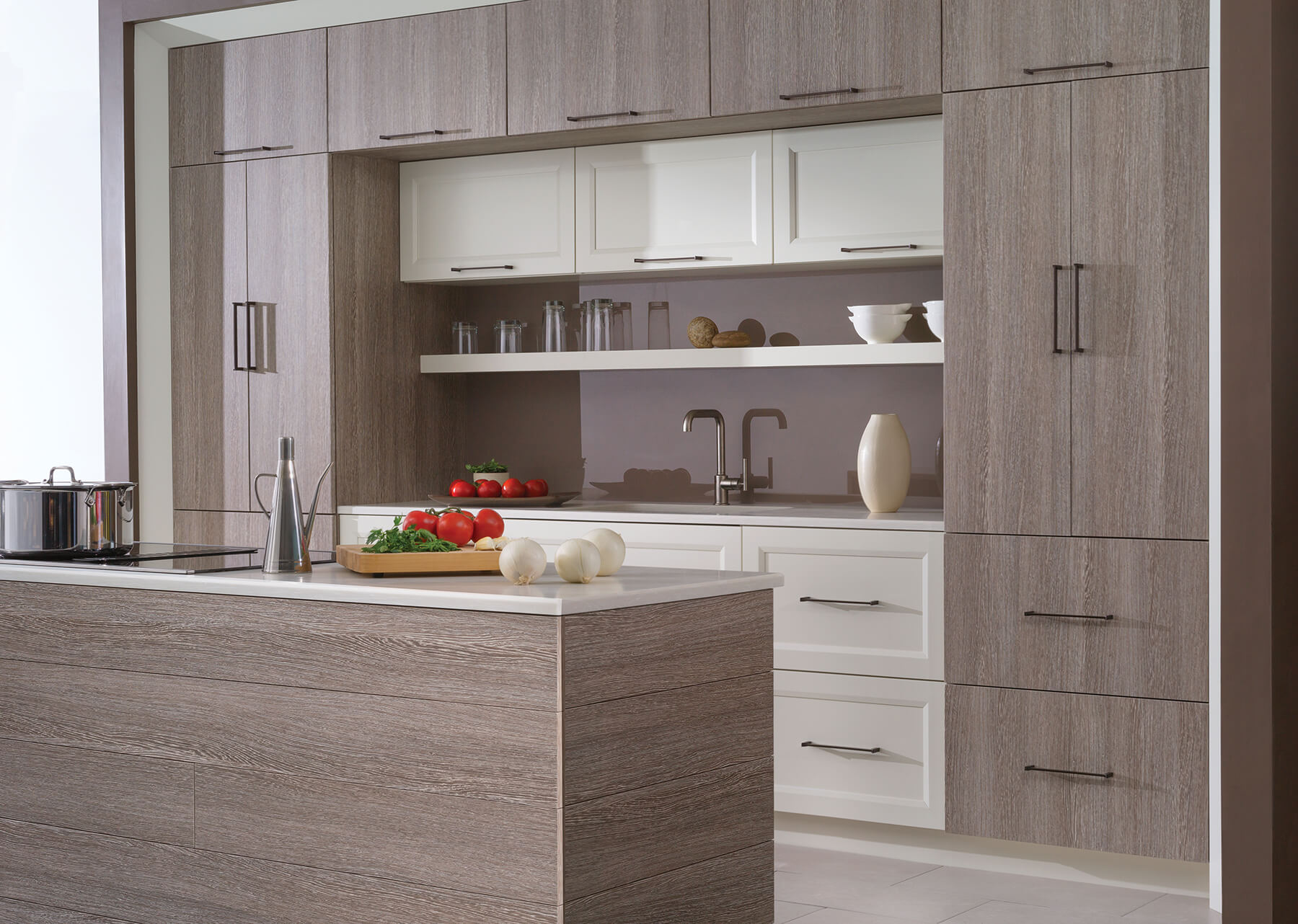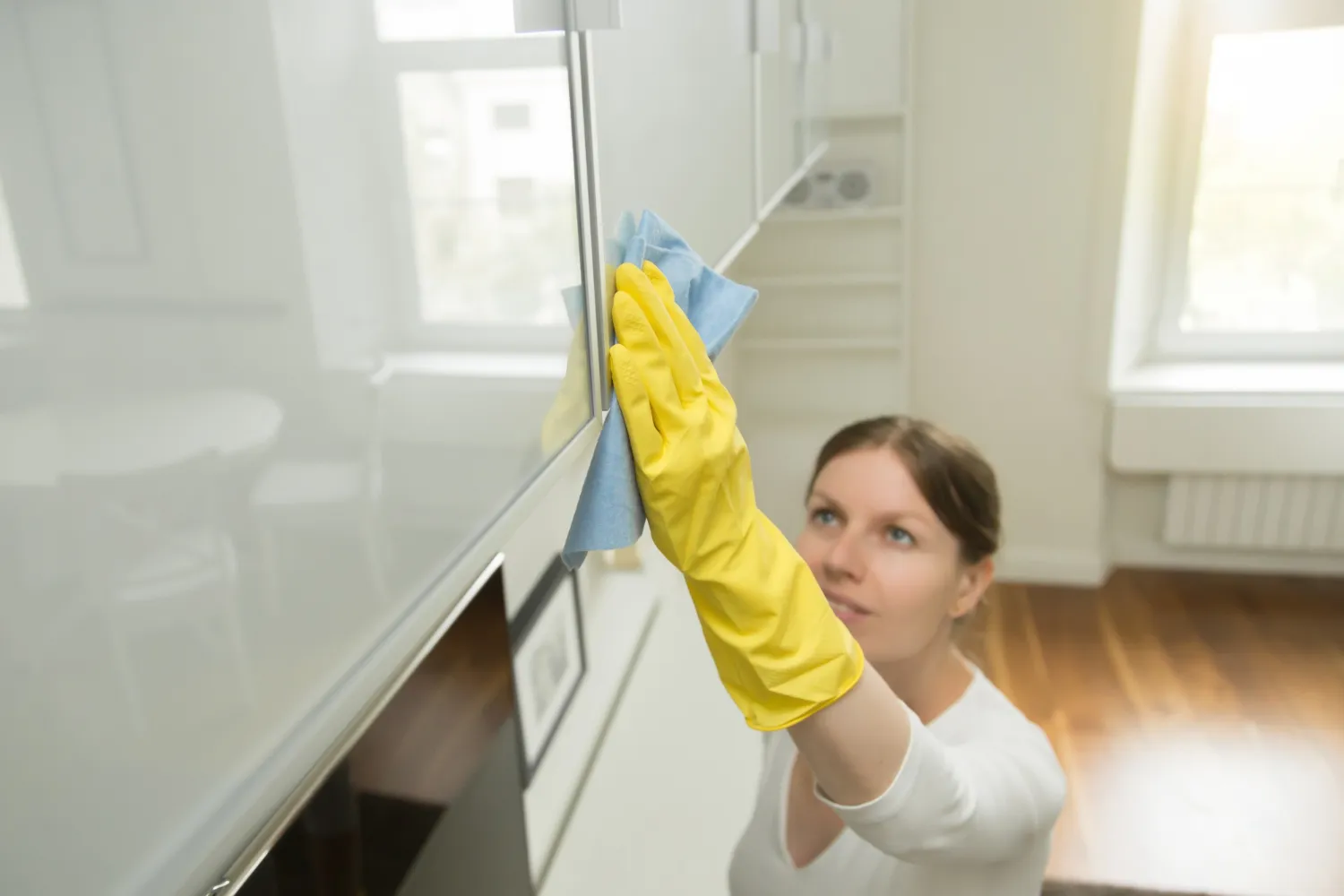Types of Cleaners Suitable for Laminate Kitchen Cabinets: Best Cleaner For Laminate Kitchen Cabinets

Okay, so you’ve got these killer laminate kitchen cabinets, right? They’re sleek, modern, maybe even a little bit retro-chic. But keeping them looking fresh and fabulous requires the right cleaning arsenal. Choosing the wrong cleaner can lead to dullness, streaks, or even damage – a total kitchen cleaning catastrophe! Let’s dive into the best ways to keep your cabinets looking their absolute best.
Suitable Cleaning Agents for Laminate Cabinets
Choosing the right cleaner is like picking the perfect soundtrack for your cleaning session – it’s gotta be effective and not leave you with a headache (or sticky residue!). The key is to avoid harsh chemicals that can strip the finish or damage the laminate. Here’s a breakdown of some top contenders:
- All-Purpose Cleaners (Sprays): Many commercial all-purpose sprays are safe for laminate, but always check the label for explicit laminate compatibility. Look for formulas that are ammonia-free and don’t contain abrasive cleaners. These often use surfactants (like alkyl sulfates) to loosen dirt and grime, and sometimes incorporate mild disinfectants. Think of it as the reliable pop song of the cleaning world – it gets the job done.
- Disinfecting Wipes: Pre-moistened wipes offer convenience, but again, read the label! Some wipes contain bleach or other harsh chemicals unsuitable for laminate. Look for those specifically designed for kitchens and labeled as safe for laminate surfaces. They’re like the quick, catchy tune – perfect for a speedy clean.
- Gentle Dish Soap (Paste): A simple solution of warm water and a drop or two of mild dish soap can work wonders. Mix it up to create a light paste, gently apply it with a soft cloth, and rinse thoroughly. This classic approach is like a timeless ballad – effective and always reliable.
Cleaning Effectiveness on Different Laminate Finishes, Best cleaner for laminate kitchen cabinets
Different laminate finishes require slightly different cleaning approaches. It’s like styling different hair types – you wouldn’t use the same product on curly hair as you would on straight hair!
- Matte Finishes: Matte finishes are less prone to showing streaks, but they can still attract dust and fingerprints. Gentle wiping with a damp microfiber cloth and a mild cleaner is usually sufficient. Avoid harsh scrubbing, which could dull the finish.
- Gloss Finishes: Gloss finishes are more susceptible to showing streaks and smudges. Use a streak-free glass cleaner (again, check the label for laminate compatibility!) and wipe in the direction of the grain for a polished look. A final wipe with a dry microfiber cloth removes any excess cleaner.
- Textured Finishes: Textured finishes require extra care. Avoid abrasive cleaners and scrubbing, as these can damage the texture. Use a soft cloth and a mild cleaner, focusing on gentle wiping to avoid scratching. Think of it like handling a delicate vintage record – careful attention is key.
Natural vs. Commercial Cleaners: Weighing the Pros and Cons
The battle of natural versus commercial cleaners is like the age-old debate of vinyl vs. CDs – both have their fans!
- Natural Cleaners: Natural cleaners, like white vinegar and baking soda solutions, offer a more eco-friendly approach. However, they might not be as effective against tough grease and grime as commercial cleaners. Think of it as the indie band – environmentally conscious, but might not have the same mainstream appeal.
- Commercial Cleaners: Commercial cleaners offer more cleaning power and often include disinfectants, providing a deeper clean. However, some can contain harsh chemicals that could damage laminate surfaces if not used properly. They are like the chart-topping pop stars – powerful, but need to be handled carefully.
Safe Cleaning Methods and Procedures

Cleaning your laminate kitchen cabinets might seem like a chore straight out of a sitcom, but with the right approach, it can be a breeze. Think of it as giving your kitchen’s star players a much-needed spa day! This section will walk you through a simple, effective, and safe cleaning process to keep your cabinets looking their best without causing any drama.
Best cleaner for laminate kitchen cabinets – Remember, laminate is a tough cookie, but it’s not invincible. Harsh chemicals or abrasive scrubbing can leave it looking less than stellar, so we’re going for a gentle approach that gets the job done without causing any scratches or damage. Think of it as a pampering session, not a demolition derby!
Step-by-Step Laminate Cabinet Cleaning
This detailed guide provides a clear path to a sparkling clean kitchen, without the need for a cleaning crew. Following these steps will ensure your cabinets maintain their shine and longevity.
| Step | Materials | Procedure | Precautions |
|---|---|---|---|
| 1. Preparation | Soft cloths, microfiber cloths (best!), sponge, bucket | Clear the area around your cabinets. Remove any items stored on top or inside. This is your pre-game prep; you wouldn’t start a basketball game without warming up, right? | Ensure the area is well-ventilated to avoid build-up of cleaning solution fumes. |
| 2. Dusting | Microfiber cloth, soft-bristled brush (optional) | Dust the cabinets thoroughly using a dry microfiber cloth or soft-bristled brush. This removes loose dirt and debris, preventing them from getting smeared around during the cleaning process. Think of this as the first layer of defense! | Avoid using feather dusters, as they can spread dust rather than remove it. |
| 3. Cleaning | Mild dish soap, warm water, spray bottle (optional) | Mix a small amount of mild dish soap with warm water in a bucket or spray bottle. Gently wipe down the cabinets with a damp cloth or sponge, working in sections. Don’t soak the cabinets; a damp cloth is sufficient. | Avoid using abrasive cleaners, bleach, or harsh chemicals, which can damage the laminate surface. Think of your cabinets as delicate flowers; you wouldn’t use a power washer on them, would you? |
| 4. Rinsing | Clean, damp cloth | Rinse the cabinets with a clean, damp cloth to remove any soap residue. This ensures a streak-free finish and prevents build-up over time. | Make sure the cloth is thoroughly rinsed to prevent soap streaks. |
| 5. Drying | Clean, dry microfiber cloth | Dry the cabinets thoroughly with a clean, dry microfiber cloth. This step is crucial to prevent water spots and maintain a clean, polished look. | Ensure the cabinets are completely dry to prevent moisture damage. |
Visual Representation of the Cleaning Process
Imagine this: You’re starting with a slightly dusty cabinet. First, you gently wipe away the dust with a dry microfiber cloth, moving in a smooth, even motion from top to bottom. Then, you lightly apply your soapy water solution with a damp sponge, working in small sections. You avoid scrubbing vigorously; instead, you use gentle, circular motions. Next, you use a clean, damp cloth to rinse away the soap, again using gentle strokes. Finally, you buff the cabinets to a sparkling shine with a dry microfiber cloth. The entire process is akin to a graceful dance, ensuring every inch is cleaned without harshness.
Preventative Maintenance Tips
Preventative maintenance is key to keeping your laminate cabinets looking fabulous and extending their lifespan. Think of it as regular check-ups for your kitchen’s superstars. A little prevention goes a long way!
- Wipe up spills immediately. Don’t let spills linger; tackle them ASAP! This prevents staining and damage.
- Use protective mats or placemats to minimize scratches and wear. Think of these as the bodyguards for your cabinets.
- Avoid using abrasive cleaners or scouring pads. These are the villains in our story; keep them far away!
- Regularly dust your cabinets to prevent dirt and grime buildup. Think of it as a weekly beauty treatment.
- Use a gentle cleaner and avoid harsh chemicals. Remember, we’re aiming for gentle care, not chemical warfare!
Addressing Specific Cleaning Challenges

Let’s be real, kitchen cabinets take a beating. Between splattering sauces, sticky fingers, and the occasional rogue glass of red wine, your laminate cabinets have probably seen it all. But don’t worry, we’re here to equip you with the cleaning power of a superhero, ready to tackle any mess your kitchen throws your way. We’re talking about banishing those stains and making your cabinets shine brighter than a disco ball.
Grease, sticky residue, and watermarks are the unholy trinity of laminate cabinet enemies. Grease, that culinary nemesis, can build up over time, leaving a dull film. Sticky residue, from everything from spilled juice to errant honey, is a magnet for dust and grime. And watermarks? Let’s just say they’re the bane of any clean freak’s existence. But fear not, because we’re about to spill the tea (pun intended!) on how to conquer these kitchen villains.
Grease Removal
Tackling grease requires a bit more elbow grease (another pun!), but it’s totally doable. First, mix a solution of warm water and a mild dish soap – think Dawn, the grease-fighting champion. Apply this solution to a soft sponge or microfiber cloth, gently scrubbing the affected area. For stubborn grease stains, a paste of baking soda and water can work wonders. Let the paste sit for a few minutes to loosen the grease before wiping clean with a damp cloth. Remember to always rinse thoroughly with clean water and dry the cabinets completely to prevent watermarks. Think of it like giving your cabinets a spa day – they’ll thank you for it!
Sticky Residue Removal
Sticky residue is the ultimate party pooper, clinging to your cabinets like a stubborn guest. For this, a simple solution of warm water and white vinegar usually does the trick. The vinegar’s acidity helps cut through the stickiness. Apply the solution to a clean cloth and gently wipe the affected area. For extra stubborn residue, try using a plastic scraper (like the kind you’d use for cleaning windows) to gently lift the residue before wiping with the vinegar solution. Avoid harsh scrubbing to prevent scratching the laminate surface.
Watermark Removal
Watermarks are like those unwanted guests that just won’t leave. They can be a real pain, but they’re often easier to remove than you think. For minor watermarks, a simple wipe down with a damp cloth is usually sufficient. For more persistent watermarks, try using a paste of baking soda and water. Apply the paste to the affected area, let it sit for a few minutes, and then gently rub with a soft cloth. A commercial laminate cleaner might also be necessary for stubborn watermarks. This is where you can channel your inner cleaning guru and experiment with different techniques.
Cleaning Hard-to-Reach Areas
Reaching those hard-to-reach corners and crevices can feel like a mission impossible. But with the right tools, it’s totally achievable. Imagine your cabinets as a challenging video game level, and you’re the ultimate cleaning warrior. For those high cabinets, a microfiber duster attached to an extendable pole is your secret weapon. This allows you to dust and wipe down the top of the cabinets without having to climb on a chair (safety first!). For those tight corners and crevices, a small, soft-bristled brush or even a cotton swab can work wonders. Picture a miniature cleaning ninja tackling those hard-to-reach spots with precision. Remember to always test any cleaning solution on a small, inconspicuous area first to ensure it doesn’t damage the laminate finish. This is your test run before the full-blown cleaning extravaganza.
